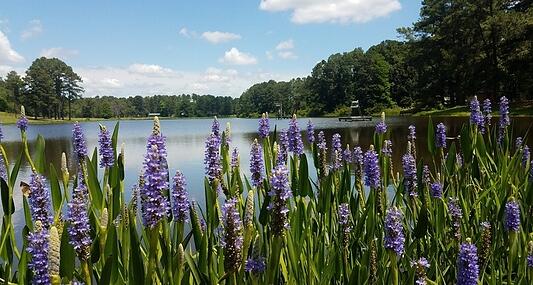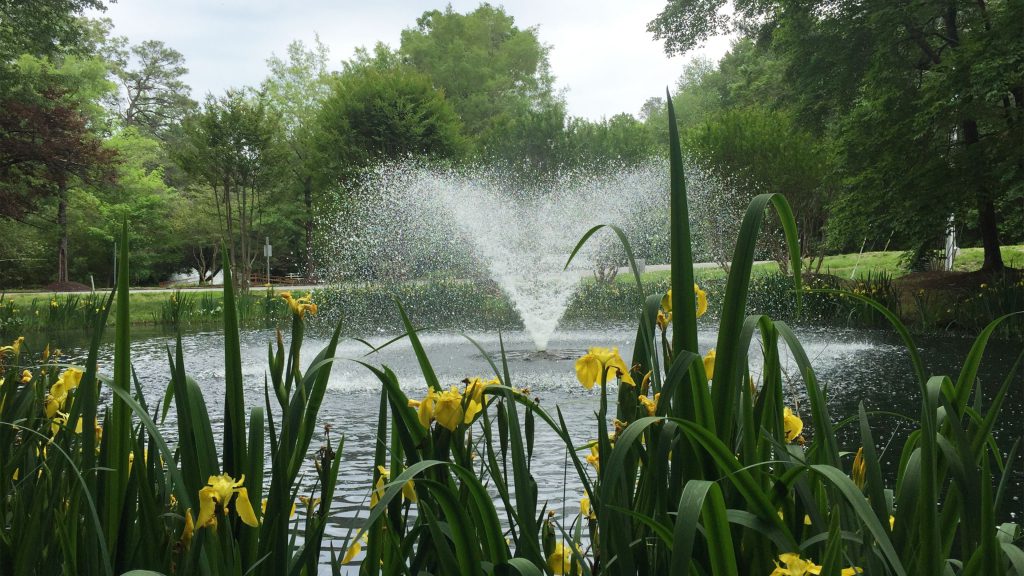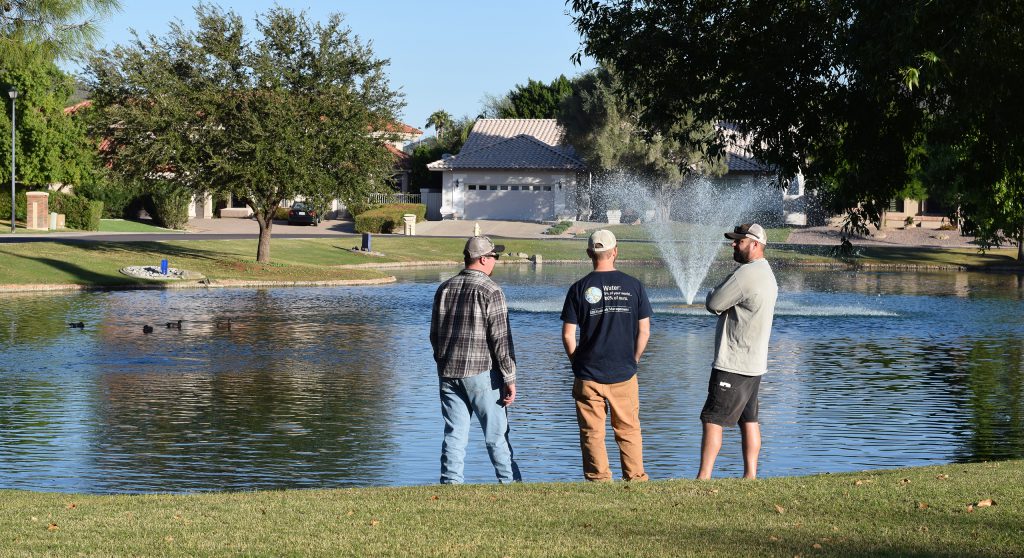
Keys To Effective Lake Design and Enhancement
Whether you are building or redesigning a lake or pond for your community, there are several important features that will help ensure the success of your waterbody and ultimately your fishery. Before you start digging or adding beautiful aquatic structures, first determine your budget and goals. Will the waterbody be used purely for aesthetics? Do you plan to use the lake for fishing? Work with a lake management professional to develop a plan and assist in your lake design efforts to help achieve your long-term goals and avoid potentially expensive and recurring issues in the future.
View these 5 key tips for effective lake design are recommended by our team of biologists and environmental scientists:

1. Increase the Lake’s Depth
The deeper the lake or pond, the easier it is to maintain. If shallow areas exist, these will be easily warmed by the sun and have a greater chance of having recurring nuisance algae and aquatic weed outbreaks. Make sure any shallow areas that do exist are heavily covered by planting beneficial aquatic vegetation.

2. Establish Buffers around Your Lake
Native vegetative plants and riparian rocky buffers offer an attractive way to absorb nutrients and fertilization and keep them from entering your waterbody. Nutrients cause algae and aquatic weeds to grow and spread throughout your waterbody. Buffers will also deter geese and other animals from making your lake or pond their home for many years to come.

3. Add Proper Aeration
Fountains add beauty and aesthetics while creating aeration and water flow. Submersed aeration is the most effective option, especially in deeper lakes and ponds. The location and number of recommended pond fountains and/or submersed aerators depends on the size, shape and depth of your waterbody. An experienced lake management professional can assess your lake or pond to determine which types of pond aeration are suited for your waterbody.

4. Install Habitat Structures
If your goal is a successful fishery, proper habitat will give the fishery the needed foundation to thrive. Habitat includes both the physical and biological aspects of the lake, including all cover, plants, structure, and the chemical characteristics of the water such as nutrient levels, pH, and dissolved oxygen.
Overabundant and poorly placed cover will spread fish out, making it difficult for predator fish to feed and fisherman to catch, while too little will make it easy for predators to “gang up” on smaller fish. Although vegetation is often considered a nuisance, it can play an important role in achieving this balance and improving the health of your pond’s ecosystem. Cover provides needed refuge to small fish and the desired hunting habitat for larger fish. Cover can be either natural, including things such as vegetation, rocks, rubble, brush, logs, or artificial, such as old farm equipment. Modern man-made cover and fish attractors are becoming more popular due to their safe use of recycled materials and long-lasting life underwater. A balance amongst several types of cover is recommended depending on the needs of the fish species within the waterbody. Don’t forget to include good spawning habitat for the young of the year in your plans!

5. Strengthening Community and Building Family and Neighborhood Ties
In designing your lake or pond, don’t forget to account for access and other key components necessary for it to be enjoyed as intended. Good access for fishing, boating launches, picnics, social gatherings, etc. should all be complemented in the design.
Balance Your Waterbody with Nutrient Remediation
Contact Our Experts
SOLitude Lake Management is committed to providing full servicelake and pond management solutions that improve water quality, preserve natural resources, and reduce our environmental footprint. Our services include lake, pond, wetland and fisheries management programs, algae and aquatic weed control, mechanical harvesting, hydro-raking, installation and maintenance of fountains and aeration systems, water quality testing and restoration, bathymetry, lake vegetation studies, biological assessments, habitat assessments, invasive species management and nuisance wildlife management. Services, consulting and aquatic products are available to clients nationwide, including homeowners associations, multi-family and apartment communities, golf courses, commercial developments, ranches, private landowners, reservoirs, recreational and public lakes, municipalities, parks, and state and federal agencies. Learn more about SOLitude Lake Management and purchase products at www.solitudelakemanagement.com.









